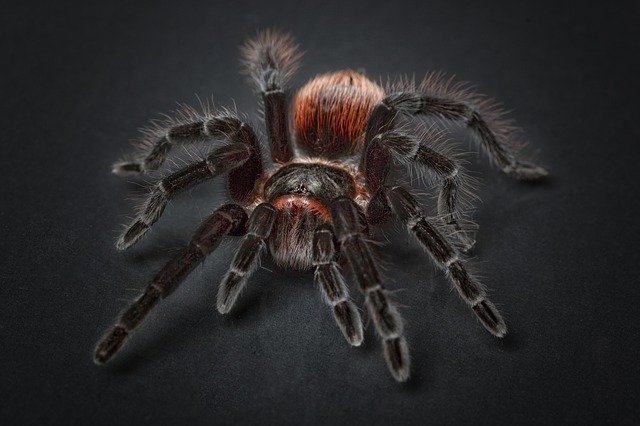The Mexican Red Rump Tarantula, also known as Tliltocatl vagans, is a tarantula species commonly found in Mexico and Central America. This species is a burrowing, land-dwelling tarantula highly distinctive for its red hairs on its abdomen. The Mexican Red Rump Tarantula is a famous spider in the pet trade due to its striking features, exotic status, docile temperament, and minimal care level. What’s even more impressive is that its body, when crushed and blended with herbs, is considered medicinal to humans. If you want to find out more interesting facts about this tarantula, make sure to read further!
History
The Mexican Red Rump Tarantula was first described by Austrian naturalist, Anton Ausserer in 1875. It was discovered in the wild in St. Lucie County, Florida, in 1996, wherein the Mexican Red Rump Tarantula was considered an established non-native species.
In Ch’ol Maya, an indigenous people of Mexico, uses the Mexican Red Rump Tarantula as a medicine. A hierbatero kills it, crushes it, mixes the debris with alcohol, and strains out the hairs using a traditional cloth. Ch’ol Maya believes that this mixture can cure the symptoms of chest pain, asthma, and cough. Scientists are still looking into the possible treatment of muscular dystrophy, glioma, and cardiac arrhythmia.
Characteristics of a Mexican Red Rump Tarantula
Average size: 5 to 6 inches
Average life span: Males live up to 5 years, while females last to 30 years
This terrestrial, burrowing tarantula possesses red hairs on its abdomen. It has long, velvety black legs. Spiderlings appear brown, and once they approach adulthood, they get red hairs on their abdomens. Male tarantulas appear brighter red, while females appear larger than the opposite sex.
When an adult feels threatened or marking its territory, it will throw off sharp hairs known as urticating hairs. Its effect is considered lethal to smaller threats, but to humans, the effect ranges from mild to moderate. An injured human will experience swelling, pain, and in some cases, allergic reactions.
It is considered a fossorial species, meaning it can dig the ground easily to take shelter. It creates a burrow in the ground to create a shelter that is meant for only one. Even if the burrow is 18 feet deep, the tarantula will live in solitude. It is nocturnal in nature, which means they don’t require special heat such as ultraviolet rays for heat or lighting.
Caring for a Mexican Red Rump Tarantula
The Mexican Red Rump Tarantula is not a heavily-webbing tarantula, so prioritize the ground space over the length of the enclosure. However, a 12 x 12 enclosure would also work well. Pet shops sometimes sell bespoke glass tarantula tanks, so you might want to check them out. Alternatively, an old fish tank or a plastic box may be used, so long as it has a tight-fitting lid and provides ample ventilation.
Your Mexican Red Rump Tarantula may spend much of its time on display, but you can offer it a hideout. Decorations such as cork bark or half of a clay pot may work well. Whatever your option is, make sure it is large enough to allow your spider pet to fit itself.
This burrowing spider would require a high-quality, thick substrate to accommodate its burrowing habits. Chemical-free potting compost, coir, peat moss, or a mixture of any of these would be ideal. Choose something that is absorbent so it can soak messes and odors to leave a more conducive habitat for your pet.
Since Mexican Red Rump Tarantulas live in arid and steady habitats in Central America, they need an environment that closely mimics their natural habitat. An ambient temperature ranging from 22 to 30 degrees Celsius is required.
Like other tarantulas, your Mexican Red Rump Tarantula will feed on live crickets and fully-grown locusts. Ensure that the insects are gut-loaded (fed with nutritious foods) and not bigger than your pet’s abdomen. Spiderlings can be provided with flightless fruit flies and pinhead crickets. An adult tarantula feeds actively and aggressively—it pounces on its food item from the back then poisons it with its venom. It has a massive appetite, which is why you should feed it 5-6 crickets or other insects a month. Spiderlings should be provided with two crickets a week.

